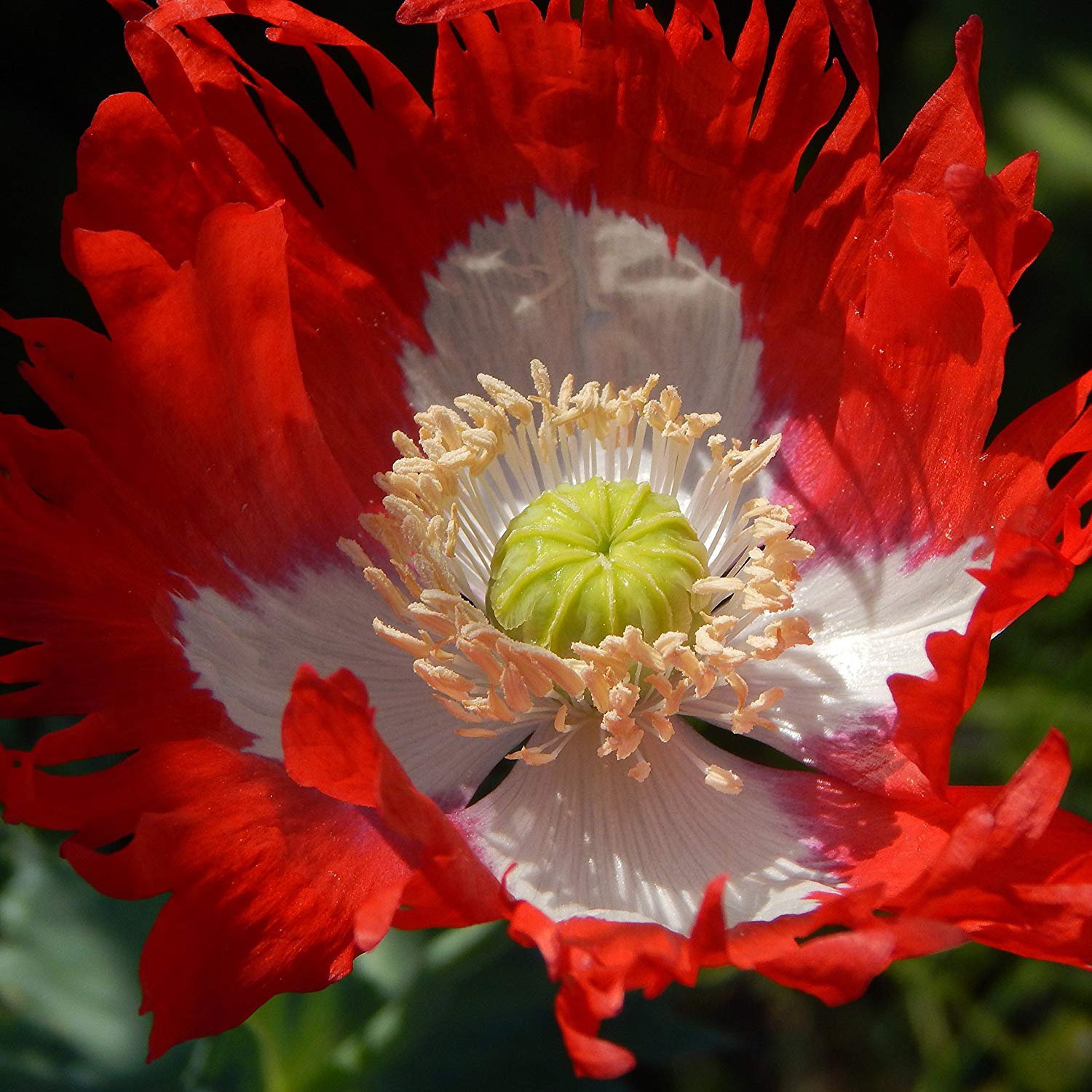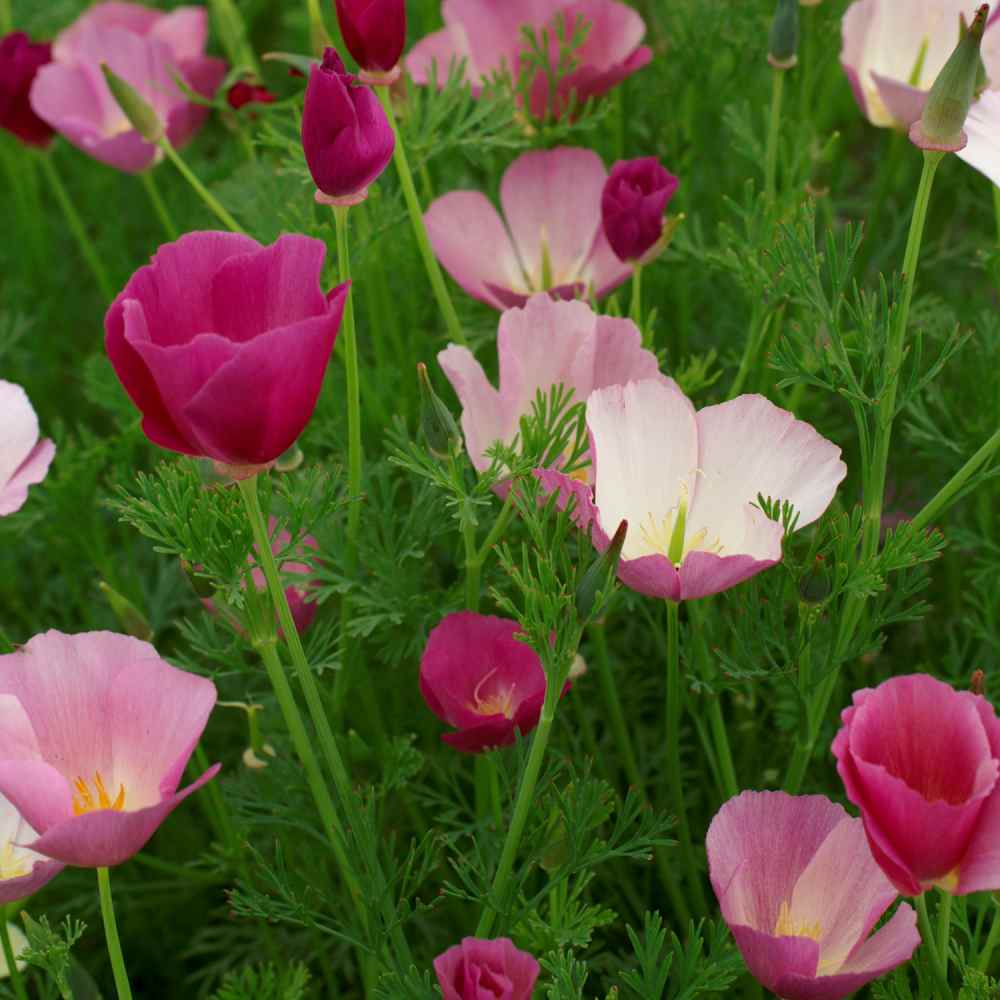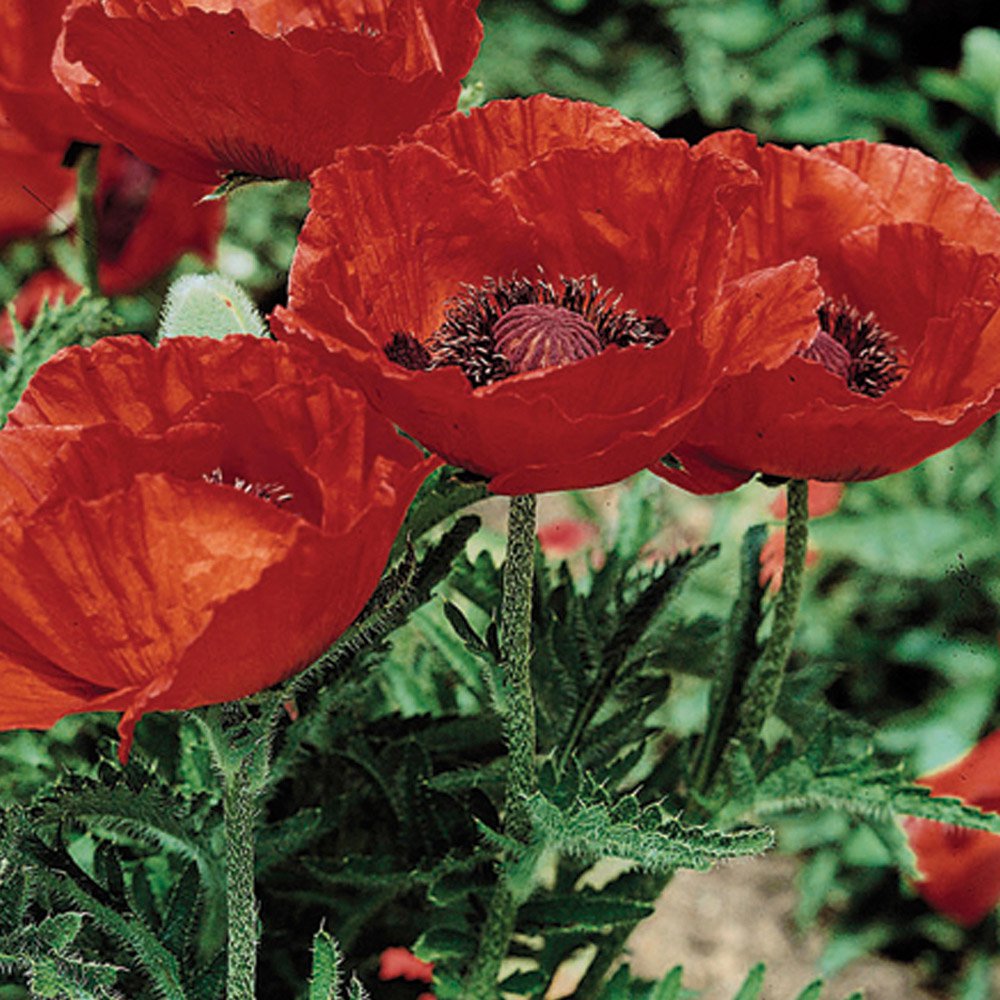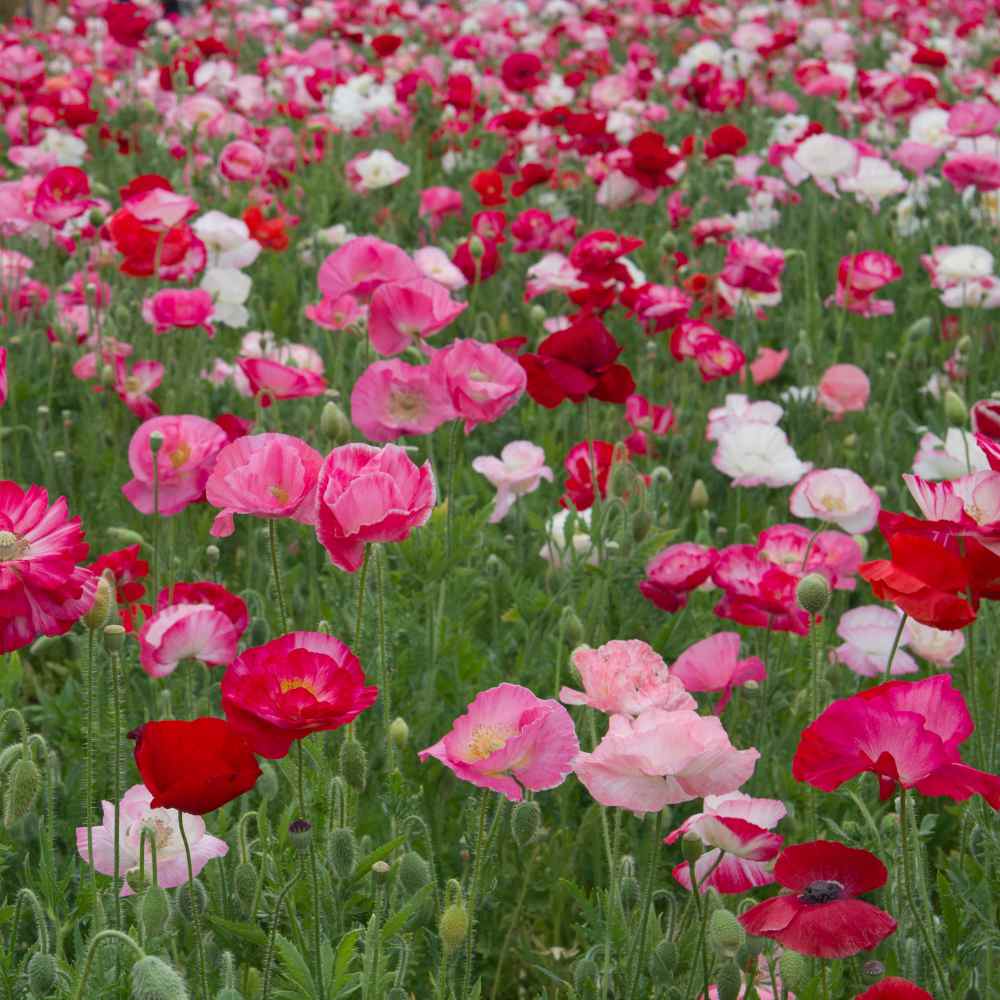
Poppy Planting Guide
Quick Facts About Poppies
Poppies are delightful flowers that seem to “pop” up along roadsides and ditches, and they are also cultivated and prized for both their flowers and unique seed pods that are dried and used in arrangements. Many gardeners sow poppy seeds in the fall and then look forward to the happy blooms in the next year.
Poppies are either annuals or short-lived perennials. They love sun and bloom in the spring or summer. The colors vary in the species, and range from vibrant shades like crimson red and bright orange, to the more soft shades of pastel pink, rose, lilac and cream. The cup-shaped blooms can be single, double, or semi-double with varied textures – crepe paper-like to satiny.
This planting and care guide for Poppy is going to cover several types: California Poppy, Seed Poppy (Opium Poppy), Corn Poppy (Shirley Poppy), Alpine Poppy, Orientale Poppy, Ladybird Poppy, Iceland Poppy, Himalayan Poppy and Peony Poppy.
Planting Time
Poppy seeds respond well to cold conditions, and the Poppy plant forms a tap root making it challenging to transplant. The general consensus is that Poppy seeds should be started directly outdoors in the late fall (after a killing frost) or the early spring when frosts are still expected. If the seed is started indoors, use peat pots which can be planted without disturbing the roots and give the seed a cold treatment of several weeks in the refrigerator.

Planting Location
All Poppies prefer fertile, well-draining soil, moderate moisture, and full sun (with the exception of Himalayan Poppy which needs partial shade). Once they are in a location where they are happy, they will easily self-sow to continue a stand of Poppy flowers year after year.
How to Plant Poppies
- Work the soil to a depth of 10 - 12 inches
- Add compost to ensure that the soil will drain well
- Tamp the soil down to form a firm seed bed
- Scatter the Poppy seeds and press them into the soil
- The flower seeds need light for germination so do not cover
- Keep the area moist for germination
- Thin to the strongest plant using the recommended spacing for the type of Poppy
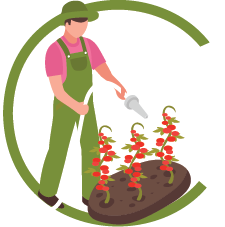
Care And Maintenance
- Irrigate regularly to establish the Poppies
- Deadhead the spent flowers to promote continued blooming
- Protect plants from winds
- Watch for damage from snails and slugs
- Cut the Poppy plants back in the winter

































